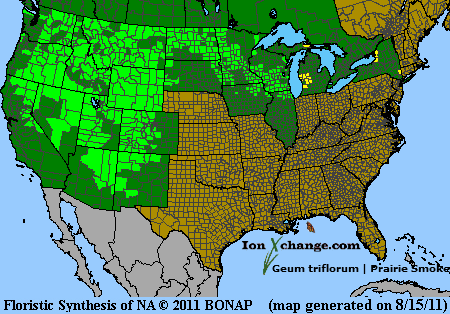 Loading... Please wait...
Loading... Please wait...- Home
- SEEDS
- SEED MIXES
- BUY PLANTS
- Info Request
-
Educational Videos
- Greenhouse Transplanting Demonstration
- Native Seed Cleaning demonstration at Ion Exchange Native Seed and Plant Nursery
- Attracting Butterflies
- Bidens - Bidens cernua Harvest Video
- Big Blue Stem Harvest
- Butterfly Milkweed Video
- Button Blazingstar - Liatris aspera Video
- Buttonbush - Cephalanthus occidentalis Video
- Canada Anemone - Anemone canadensis Harvest Video
- Cardinal Flower - Lobelia cardinalis Video
- Control Burn - Wildflower Field
- Cream Gentian - Gentiana flavida
- Culver's Root - Veronicastrum virginicum Video
- Cup Plant - Silphium perfoliatum Video
- Dormant Seeding | Planting
- Earthyman's Favorite Wildflowers Video
- Eco-Friendly Golf Course Seed Mix
- Floating Islands
- Fringed Loosestrife - Lysimachia ciliata Video
- Giant Yellow Hyssop - Agastache nepetoides Video
- Indiangrass - Sorghastrum nutans Video
- Iowa Prairie Partner Program
- Leadplant - Amorpha canescens (Potted) Video
- Meadow Blazingstar - Liatris ligulistylis
- Midland Shooting Stars - Dodecatheon meadii Video
- Native Plant Nursery Field Irrigation Experiment
- Nodding Onion - Allium cernuum Video
- Ohio spiderwort - Tradescantia ohiensis Video
- Old Man's Beard - Clematis virginiana blooms Video
- Oxeye Sunflower - Heliopsis helianthoides Video
- Prairie Spiderwort - Tradescantia bracteata
- Purple Coneflower - Echinacea purpurea Video
- Rain Garden or Water Garden Video
- Rattlesnake Master - Eryngium yuccifolium Video
- Riverbank Stabilization - Wetland Plants
- Rose Mallow - Hibiscus militaris Video
- Rosinweed - Silphium integrifolium Video
- Royal Catchfly - Silene regia
- Showy Tick Trefoil - Desmodium canadense Video
- Sneezeweed - Helenium autumnale Video
- Swamp Betony - Pedicularis lanceolata Video
- Swamp Milkweed - Asclepias incarnata Video
- Sweet Blackeyed Susan - Rudbeckia subtomentosa Video
- Tall Coreopsis - Coreopsis tripteris Video
- Urban Butterfly Garden
- Wild Bergamot - Monarda fistulosa Video
- Wild Geranium - Geranium maculatum Harvest
- Wild Goldenglow - Rudbeckia lanciniata Video
- Wild Petunia - Ruellia humilis Harvest Video
- Woodland Knotweed - Polygonum virginianum Video
- Yellow Coneflower - Ratibida pinnata Video
- Blog
- Resources
- Policies
Contact Us
Phone:
563-419-0837
or 563-535-7231
Email:
hbright@ionXchange.com
Browse Products
Add to Wish List
You Recently Viewed...
Our Newsletter
Product Description
"Old Man's Whiskers, Johnny Smokers, Long-plumed purple Avens"
| Sun Exposure | Prairie, Savanna |
| Soil Moisture | Wet Mesic, Mesic, Dry Mesic, Dry |
| Bloom Time |
Spring, Summer April, May, June |
| Bloom Color | Red |
| Max Height | 8 inches |
| Wetland Code | FACU- |
| Germ Code | C(60) |
| Seeds Per Packet | 100 |
| Seeds Per Ounce | 27,000 |
Geum from the ancient Latin name used by Pliny for this group; triflorum also from the Latin meaning "three-flowered".
Found throughout the Tallgrass Prairie Region on prairies and rocky soils. They are among the earliest bloomers on the prairie beginning in May and flowering through June. Ranges in height from 6to 16 inches tall with very distintive whispy plumes.
The roots of Prairie Smoke were used by early settlers to make a weak, sassafras-like tea. It was used to treat colic and digestive system disorders and is a powerful astringent. It also served as a styptic and fever reducer. The Blackfoot tribes used a mix made from the pulverized roots to serve as an eyewash and the Ojibwa made a tea from the roots to treat coughs and sore chests.
A decoction of the roots is a tea substitute. It tastes like a weak sassafras tea. A brew was used in Indian sweat houses as a body wash for aches and pains.
Edible Uses: A decoction of the roots is a tea substitute. It tastes like a weak sassafras tea. A brew was used in Indian sweat houses as a body wash for aches and pains.
Medicinal Uses: A strong decoction of the roots is used as a tonic in the treatment of severe coughs and fevers. This decoction can also be used as an eye wash and as a mouth wash for sore throats. An infusion of the roots, mixed with oil, can be applied as a salve to sores, rashes, blisters and flesh wounds. An infusion can also be used as a wash for aching joints, stiff sore muscles etc.
Other Uses: The crushed ripe seeds are used as a perfume.
Herbal Uses: Unknown













